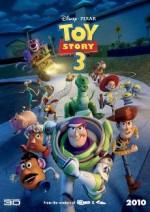Student evaluation forms becoming comment-friendly
Alexia Bolton sits at her desk in mid-November as a classmate passes out student evaluation forms. But, there’s something different about this end-of-the-semester routine.Check marks have been replaced with bubbles and each question has room for a comment.
“With the new evaluations, teachers get more back, they are longer and have better questions,” Bolton said.
Bolton is also employed as a work study student in the president’s office, so she is thankful for the updated evaluations for selfish reasons.
“It’s much easier for me now. Before I had to count out each one, pack them and deliver hundreds. It took a lot of my time,” she said. “Now we send them out and have another company do all of it.”
Castleton’s Reappointment Promotion and Tenure Committee implemented the use of a new student evaluation form last fall and students were faced with yet another change on campus. The new form is handled by College Survey Services, Inc., an outside company that provides institutions with evaluations that are easy to administer, cost-effective and have a brief turn-around reporting time.
Peg Richards, associate professor of Business Administration and member of the RPT Committee, was asked to review the 20-year-old evaluation forms in 2005.
“Student evaluations are looked at very seriously by the college,” Richards said. “They give us input on faculty members’ futures.”
Richards, along with a small committee of students, faculty and administration, began to meet to review the old form. After numerous discussions, the majority of those involved wanted to develop an entirely new form.
“In my work experience, I’ve always been told ‘you don’t try to gain a little, you try to gain a lot,'” Richards said of the move toward change.
The group collaboratively decided that it would be important to increase confidentiality, make sure the questions being asked were valid and to automate some piece of the form.
This began their five-year research effort to create a new evaluation system.
In the spring 2009 semester, the first signs of new form options emerged when tenured professors were asked to test two separate “pilot” evaluations in their classes, said Richards.
“We met with vendors who sold the systems and used two pilots with two very different systems,” she said. “One was very lengthy while the other was brief.”
The shorter system came out “overwhelmingly” on top Richards said.
The prevailing system was executed in classrooms across campus last fall and during the January term.
Alyssa Albrico, a Castleton junior, approved of the committee’s decision to be more confidential.
“I like the new ones better because they can’t recognize your hand writing,” she said.
Blithe Devon, a Castleton senior, said that she has never liked Castleton’s evaluations, but admits the new forms are an improvement.
“I like how a professor can ask their own question, being able to get a professors specific question about the course is nice,” Devon said.
She also has ideas for improving Castleton’s student evaluations.
“CCV does mid-term evaluations. That way professors are addressing problems earlier on,” she said. “I think that works well.”
According to Richards, this will be an option for professors on a voluntary basis with the new evaluations.
Although students have had nearly two months to reflect upon the update, faculty and administration have only been able to view the results just recently.
The data from each student form is compiled in an electronic packet that is sent to professors via e-mail from College Survey Services. Professors are now given a synopsis with the average rating for each question. Furthermore, if there is more than three of the same course; it will show them their class ratings in comparison with others.
“Part of what is different is the way it compares with other classes,” said Jared Shapiro, music professor at Castleton.
Shapiro also teaches courses at CCV and Green Mountain College, but says their student evaluations are similar to our old ones.
“I haven’t seen numerical comparison in others,” he said. “I think that is useful.
Although breaking away from two decades of unchanged evaluations is proving to be difficult for some, Richards said that most of the feedback she has received thus far is “neutral” and is hopeful that students and faculty are willing to accept the adjustment.
“There are still some things we want to do differently, but as long as we are on the road to a better place it’s a success,” she said with a smile.






